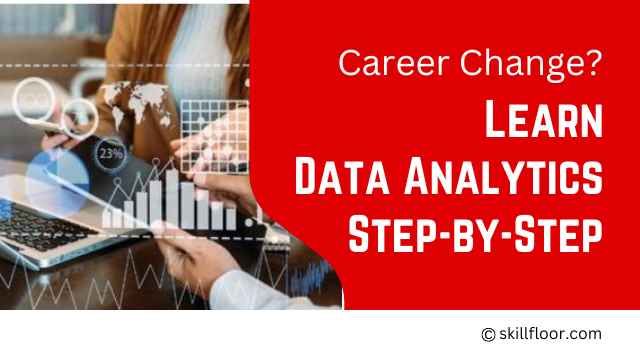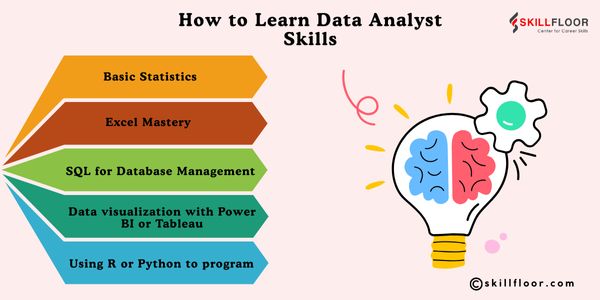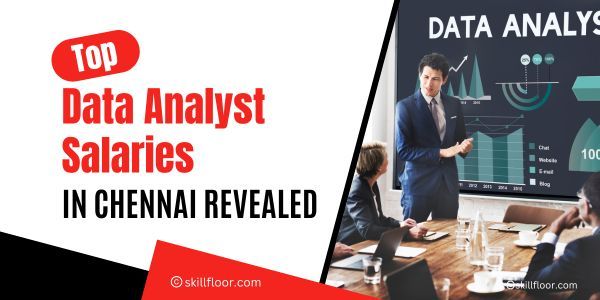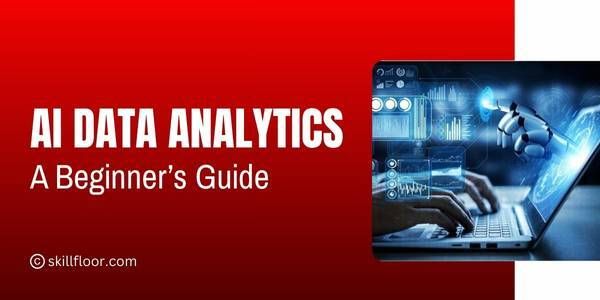How to Learn Data Analyst for a Career Transition
Learn practical steps to transition into a data analyst career, including essential skills, tools, and resources to kickstart your new path.

I can still remember my decision to become a data analyst by changing careers. I always ask, "What is a data analyst, and how can I become one?" because I come from a completely different field. Although it was difficult to consider entering a new field, the many opportunities and possibilities that data analytics offered encouraged me. You're not alone if you're thinking about a career change and are confused about how to learn data analyst skills. These days, many people are going through similar changes due to the need for data-driven insights in practically every business.
Let's explore what a data analyst does, why going into this field is a great career choice, and provide you with a step-by-step plan to build the skills you'll need to be successful. And, provide you with all the tools you need, no matter your experience in technology, to enable an effortless transition into the data analytics business.
What is a Data Analyst?
It's critical to understand the responsibilities of a data analyst before diving into how to gain data analyst skills. Large datasets are collected, processed, and analyzed by data analysts to help organizations in making acceptable decisions. In basic terms, they convert raw data into useful insights.
For example, if you are employed in marketing as a data analyst, you can analyze customer behaviour data to find the marketing strategies that provide the best return on investment (ROI). In healthcare, a data analyst could work with patient data to find trends that improve treatment outcomes. To understand data, data analysts use a combination of statistical techniques, data tools, and critical thinking, regardless of the business.
Why Consider a Career Transition into Data Analytics?
The need for data analytics is growing fast across all industries; therefore, it's a great moment to enter this field. The following are some justifications for thinking about making the switch to a profession as a data analyst:
-
High Demand for Data Analysts
There is an increasing need for qualified data analysts as organizations become more data-driven. Organizations in the retail, healthcare, finance, and technology industries are gathering huge quantities of data that require analysis. Data-related jobs will increase by 25% through 2029, much faster than the average for all occupations, according to the U.S. Bureau of Labor Statistics.
-
Flexibility Across Industries
The flexibility of a career as a data analyst is one of its most appealing characteristics. You can work in nearly every area, including government, education, and the media and entertainment sectors. Regardless of your hobbies, understanding information is a globally valuable skill that is at the core of decision-making.
-
Competitive Salary and Professional Development
Even in entry-level professions, data analysts receive competitive pay. Data analysts usually make between $60,000 and $90,000 a year, with more senior roles earning more. This depends on your region and skill level. There are lots of opportunities for job advancement in the subject because of its rapid growth, independent of your preference for focusing on business intelligence, machine learning, or data science.
How to Learn Data Analyst Skills
Understanding the benefits of a job in data analytics, especially for those switching from non-technical fields, let's look at how to learn data analyst skills. Thankfully, even for those who are new to data analytics, many of the concepts and techniques are understandable. Here’s a step-by-step guide on what you need to learn and how to get started:

1. Understanding Basic Statistics
Simply put, data analysis is the process of making meaning of statistics, which calls for a strong understanding of basic statistical ideas. While becoming a statistician is not necessary, it is important to grasp probability distributions, variance, averages, and correlation.
For example, when summarizing datasets, you will often deal with metrics like mean, median, and mode. To make predictions and verify assumptions, probability and hypothesis testing are important. Beginner-friendly statistics lessons are available on several online platforms, such as Khan Academy, Udemy, and Coursera. If money is restricted, you can even start with free YouTube videos.
2. Excel Mastery
One of the most useful and understandable tools for data analysis continues to be Excel. Excel is a spreadsheet program that may appear basic at first look, but it has a ton of advanced skills, such as pivot tables, VLOOKUP, and data visualization tools. Learning Excel is essential for beginners since it lets you examine and work with data without requiring advanced computer languages.
Learn how to use Excel to clean and arrange data first. Next, advance to analyzing your results with charts, pivot tables, and formulas. Because Excel is a widely used tool in businesses of all kinds, becoming proficient with it is essential to becoming a data analyst.
3. SQL for Database Management
The standard language for interacting with databases is called SQL (Structured Query Language). You'll need to access and modify data from big relational databases in your role as a data analyst. With SQL, you may join many datasets to generate reports, extract specific information points, and filter data based on specific requirements.
With the help of beginner-friendly training on Codecademy or W3Schools, you may begin learning SQL. Start with simple SELECT statements and work your way up to more complex subjects like subqueries and JOINs. Since almost all data analysis jobs involve querying databases, mastering SQL is important.
4. Data visualization with Power BI or Tableau
It is essential to present data in a visually appealing manner to enable stakeholders to understand structures and insights. You can transform raw data into interactive dashboards, charts, and graphs that non-technical audiences can easily understand with visualization tools like Tableau and Power BI.
With only some coding skills, everyone may begin creating visualizations due to the user-friendly design of these tools. Gaining proficiency in creating dashboards with Tableau or Power BI can greatly enhance your capacity to effectively convey data insights.
5. Using R or Python to program
While it's not always required, learning a programming language such as Python or R can greatly expand your skill set for entry-level data analyst jobs. In data science and analytics, these languages are commonly used to automate data manipulation, carry out complex statistical analyses, and create predictive models.
Python is especially popular because of its many built-in data analysis-specific libraries, such as NumPy and Pandas, and how simple it is to use. R is just as useful but more specialized for statistical computing. Begin by becoming skilled in dataset manipulation, task automation, and exploratory data analysis.
Building a Step-by-Step Learning Path
A carefully developed learning strategy is necessary to make the transition into a data analyst career successful. This is a recommended learning path to help you in becoming an effective data analyst:
Step 1: Get the Basics Right
Start your learning process by concentrating on basic concepts such as SQL, Excel, and statistics. These are the fundamentals of data analysis; with them, you can examine data and produce useful reports.
Step 2: Use Your Skills in Real Projects
It takes more than just theory to succeed; you also need real-world experience. Start by completing little tasks. For example, you can analyze a dataset from Kaggle, an online community for people interested in data science and machine learning, that is accessible to the general public. Projects may include data organization and cleansing, basic analysis, and Tableau or Excel visualization of the findings.
Step 3: Expand Your Knowledge of Data Wrangling
The process of cleaning and preparing unprocessed data for analysis is known as "data wrangling." This could include converting the data into a format that can be used, addressing missing values, and handling conflicting data types. You can do this with great efficiency as a data analyst by learning how to automate these activities using Python's Pandas package.
Step 4: Examine Advanced Tools and Techniques
You may explore more complex fields like machine learning, predictive analytics, or even artificial intelligence after you're at ease with the basics. Many possibilities are available for data analysis and analysis with tools like Scikit-learn, R, and Python.
Step 5: Build a Portfolio
Create a Portfolio Record your projects as you study and combine them into a portfolio that highlights your abilities. One of the best ways to show off your skills to potential employers is by creating a portfolio of projects that demonstrate your knowledge in real-world settings.
Utilizing Free and Paid Resources for Learning
There are several paid and free online tools available to help you learn how to work as a data analyst. Here are a few things to think about:
1. Kaggle
Kaggle is a great resource for improving your data analysis techniques. You may put what you've learned to use with thousands of datasets, coding challenges, and tutorials available. Competitions on Kaggle are also an excellent way to put your talents to the test in real-world situations.
2. GitHub
Developers and data scientists frequently contribute to open-source projects on GitHub. There are lots of data analysis projects available for you to participate in and learn from. Creating your own GitHub repository lets you display your work as a portfolio to prospective employers.
3. Udemy and Coursera
In-depth courses on everything from basic data analysis methods to modern machine learning are available on Coursera and Udemy. Many industry leaders teach these courses, which can result in certificates that will stand out on your CV.
4. You Tube
Many YouTube channels exist that are dedicated to training viewers on data analytics. Channels that offer helpful tutorials on a variety of topics include Data School, Corey Schafer (for Python), and Kevin Stratvert (for Excel and Power BI).
Networking for a Career Transition
Any professional shift requires networking, and data analytics is no different. You can expand your professional network in the following ways:
1. Join Data Analyst Communities
Engage in online networks such as r/datascience on Reddit or join data analytics-related LinkedIn groups. You can connect with professionals in the sector, exchange insights, and pose inquiries using these platforms.
2. Go to Industry Events
Online or off, events like PyData, Tableau Conference, and industry meetings offer invaluable opportunities to network with other data analysts, exchange ideas, and maybe learn about career prospects.
3. Create Social Media Connections with Data Analysts
You can keep up with new developments in data analysis tools, methods, and trends by following industry professionals on LinkedIn or Twitter. Engaging with their content can lead to networking prospects as well.
How to Prepare for Data Analyst Job Applications
When you've developed your abilities and gained practical experience, it's time to begin applying for jobs. This is how to get ready:
1. Create an Effective Resume
Your CV should showcase your newly developed data analysis skills as well as your proficiency with the many technologies you've learned (e.g., Excel, SQL, Tableau). Make sure to mention the projects you've worked on and any relevant qualifications you've earned.
2. Get Ready for Technical Interviews
Many data analyst careers need technical interviews that test your SQL, Excel, and data visualization skills. Use coding challenges from sites like StrataScratch, LeetCode, and HackerRank to improve your time-sensitive problem-solving skills.
3. Be Open to Entry-Level Roles
If you want to shift careers, think about applying to jobs as an entry-level data analyst. These jobs will help you expand your experience, boost your confidence, and set the stage for future opportunities.
Upskilling for Future Opportunities in Data Analytics
As the field of data analytics continues to develop, long-term professional success needs to stay updated with the latest tools and methods. Here's how you can stay up:
1. Advanced Skills
Once you’ve established yourself in a data analyst ability, look into getting advanced certifications in programs like Power BI, Tableau, or Google Analytics. A certification can help you stand out in a crowded employment market and prove your knowledge.
2. Look into machine learning and data science
Think about expanding out into related topics like machine learning or data science as you get experience. Predictive modelling and AI-driven decision-making are two increasingly advanced tasks that may be accessed with Python, R, and frameworks such as TensorFlow.
3. Continuous Learning
The subject of data analytics is evolving quickly, and maintaining current knowledge requires constant learning. To stay up to date on new trends and technology, join online forums, attend webinars, and subscribe to industry blogs.
Taking the move to become a data analyst is an exciting journey that presents both new challenges and learning opportunities. You can successfully transition into a new career by following to the procedures listed in this book, which include developing a portfolio, networking, obtaining practical experience, and acquiring the necessary abilities.
Remember that working as a data analyst is a process and that each step you take will get you one step closer to your goal. Stay engaged in your learning process no matter how skilled you are with Excel, SQL database searches, or creating complex Tableau visuals. You'll soon be prepared for your first data analyst position, with the abilities, know-how, and confidence required for success.
Are you ready to start your transition? Start today and take the first step toward an exciting and successful career in data analytics!




























































